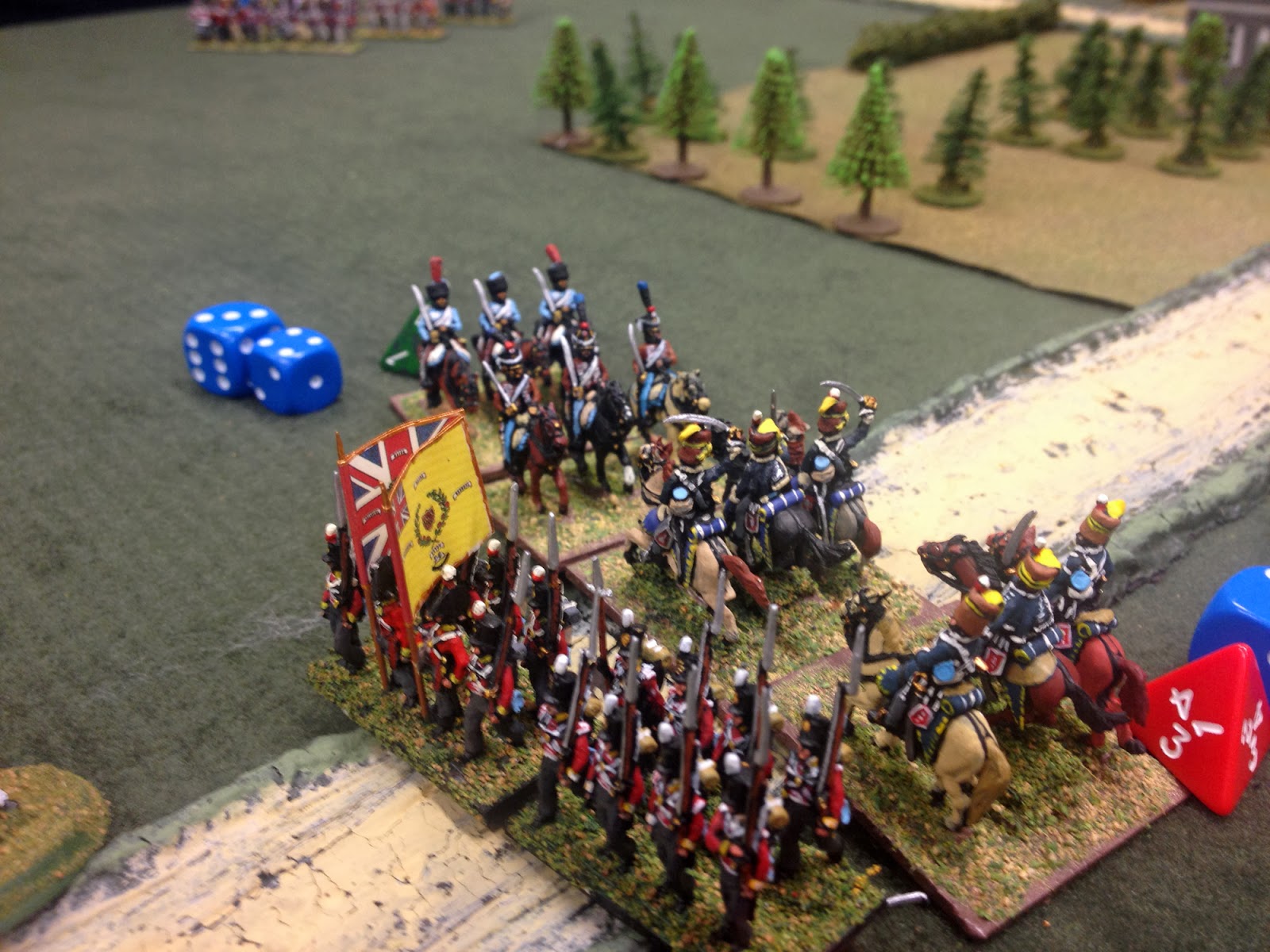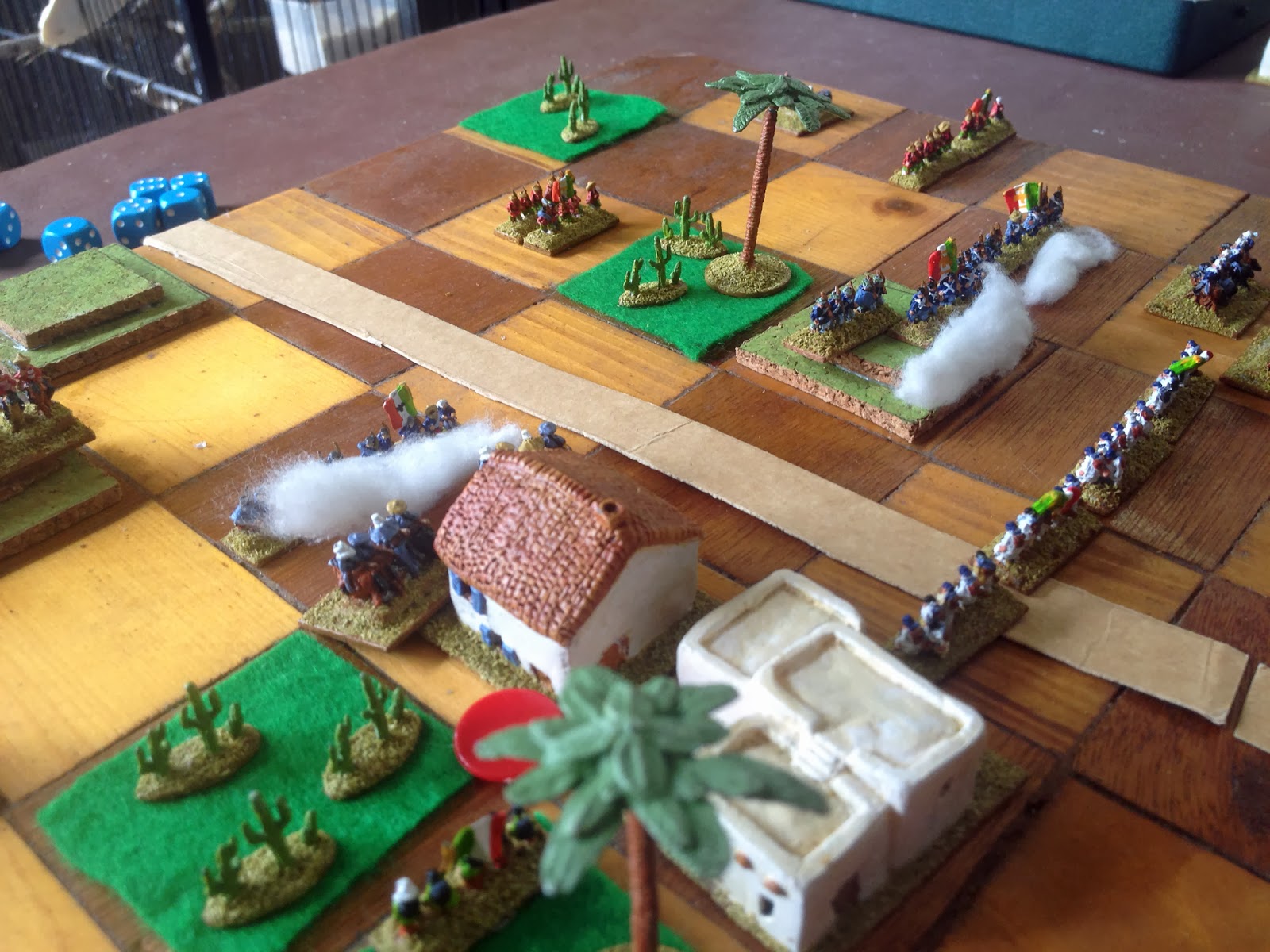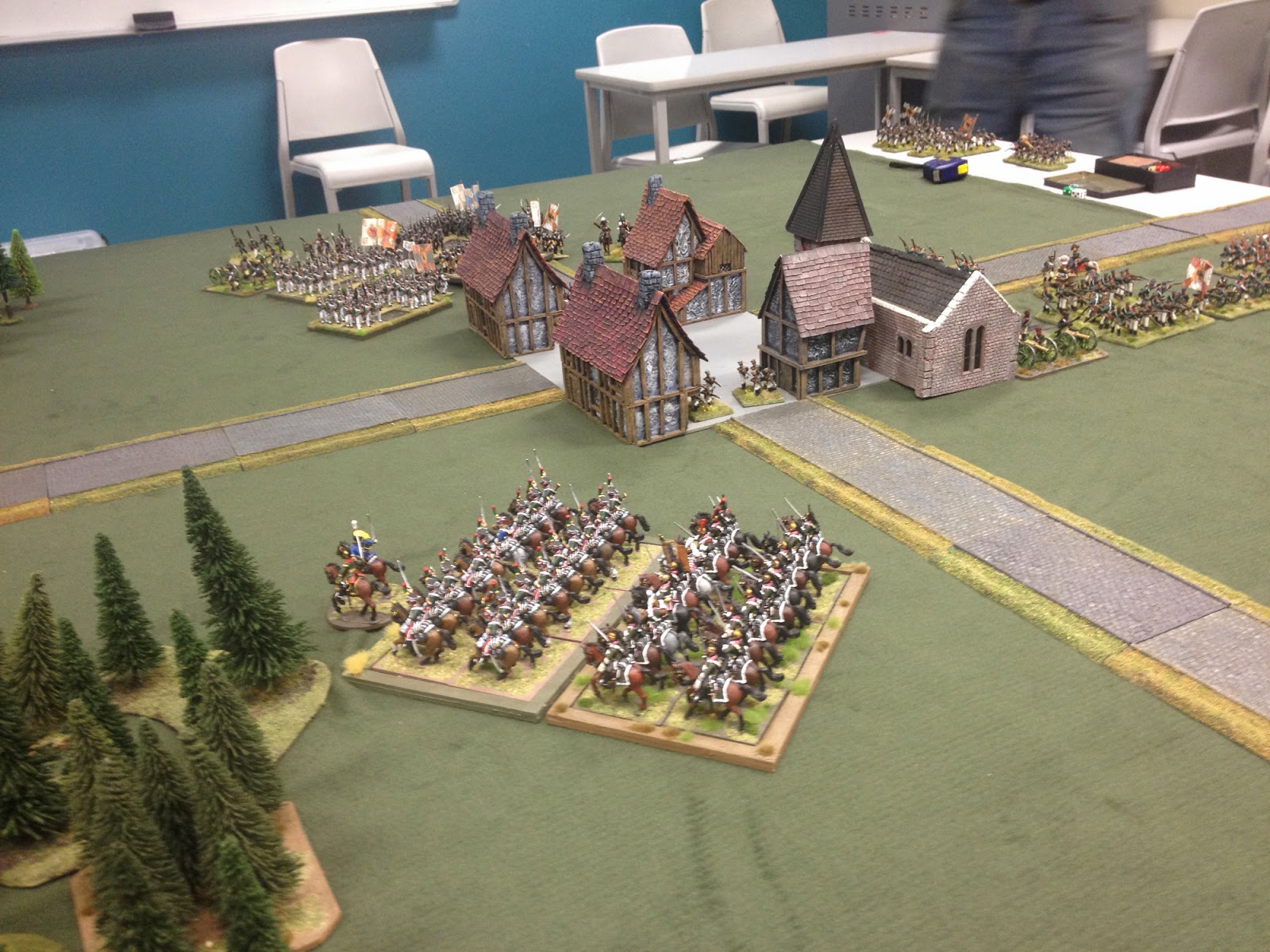I played another Mexican Adventure game this morning, using, as with previous games, a cobbled together 'Battle Cry' variant. The rules were much the same as the last game I played:
Infantry - Move 1 and battle - Factors 3-2-1 - Hits 4
Cavalry - Move 2 and battle - Factors 3 - Hits 3
Artillery - Move 1 or battle - Factors 4-3-2-1 - Hits 3
General - Move 2 or with attached unit - Allows unit to ignore one retreat. A General can always move and does not need to be activated.
Movement is always orthogonal, but I realised from previous games that the square grid offers fewer retreat options than the hex grid of 'Battle Cry' or Memoir '44'. So I allow retreating units to move diagonally.
I used normal D6 again for combat:
1-2 scores a hit on Infantry
3 scores a hit on Cavalry
4 scores a hit on Artillery
5 scores one Retreat on anything
6 scores a hit on anything
Activation was much the same. I gave both sides four dice with which to activate units.
1-2 Allowed the activation of an Infantry unit
3 Allowed the activation of a Cavalry unit
4 Allowed the activation of an Artillery unit
5 Allowed a reroll, plus you added in an extra dice. Subsequent rolls of '5' on these dice did the same, so you could end up with far more than four units activated.
6 Allowed you to activate anything.
For this game I decided to play a straight encounter battle. Each side had the following forces:
Four units of Infantry
Two units of Militia Infantry
Two units of cavalry
One unit of Militia Cavalry
Two units of Artillery
One General
(Militia units take one less hit than their type normally would)
Here's the terrain:
There were hills, buildings and scrub. All blocked line of sight.
If you attack a unit on a hill or scrub you roll one less dice in combat. Infantry and Artillery attacking units in a building rolled one less dice, Cavalry rolled two less dice. Cavalry in buildings could never roll more than one dice in combat. Cavalry and Artillery entering scrub or buildings end their move for the turn, and cannot battle. Infantry also en their move, and battle at 2-1 on the turn the enter only.
The victory level for this battle was five flags. If a side was the last to move through both building squares then they got a medal.
I deployed the troops in a semi-random manner which I won't bore you with here. This was the deployment I ended up with.
The Imperial cavalry was massed on their right flank in an impressive array.
The Republican deployment was more scattered, but they had a strong infantry line to the fore.
The Republicans rolled excellent activations early in the game, including lots of fives, some of which rolled
more fives! This allowed them to make a very aggressive advance. Their cavalry pushed forward and occupied the buildings, giving them a victory flag.
The Imperial cavalry moved up to oppose the Republican advance.
Austrian infantry engaged the cavalry in the building whilst, on the other side of the road, opposing infantry got to grips with each other.
The Republicans pulled together a strong defensive line in the buildings and scrub.
However one of their militia infantry was routed by musketry.
The Imperial cavalry launched a fierce attack on one end of the line, and inflicted a number of hits.
The cavalry in the buildings were taking considerable casualties, so withdrew, with the infantry consolidating the Republican position.
The Imperials kept attacking.
And another Republican militia unit routed. These were not units to which you could trust your centre.
On the one flank opposing artillery were engaged in a duel. In addition the Republicans had fallen back in the scrub under increasing pressure from the Imperial cavalry.
The cavalry charged again ...
... and the infantry routed.
Fierce fighting in the buildings ....
... saw another infantry unit routed, and the Republican general isolated.
The Imperial cavalry turned its attention to the artillery on the hill.
With the bulk of its infantry lost, The Republicans resorted to a cavalry charge in order to try and salvage their position.
They routed an Imperial militia unit.
However on the other flank their militia cavalry, after forcing an Imperial unit to retreat with casualties, came under heavy fire and ran.
And that was it - with five units lost the Republicans had lost the battle. They scored two flags; one for destroying an enemy unit and another for still holding the buildings at the end of the game.
It was a closer game than it looked, though - a number of Imperial units were only one hit away from being lost, so a strong Republican attack could have tipped the game back in their favour.
The Republicans started well, gaining a strong positional advantage, but they lost out to good combat rolls from the Imperials, who seemed to be able to drive all before them.
The rules worked very smoothly, giving a fast, desperate game. I'd still like to find a better role for generals, though, and I'm pondering a method of allowing pursuit after combat in some circumstances.


































































